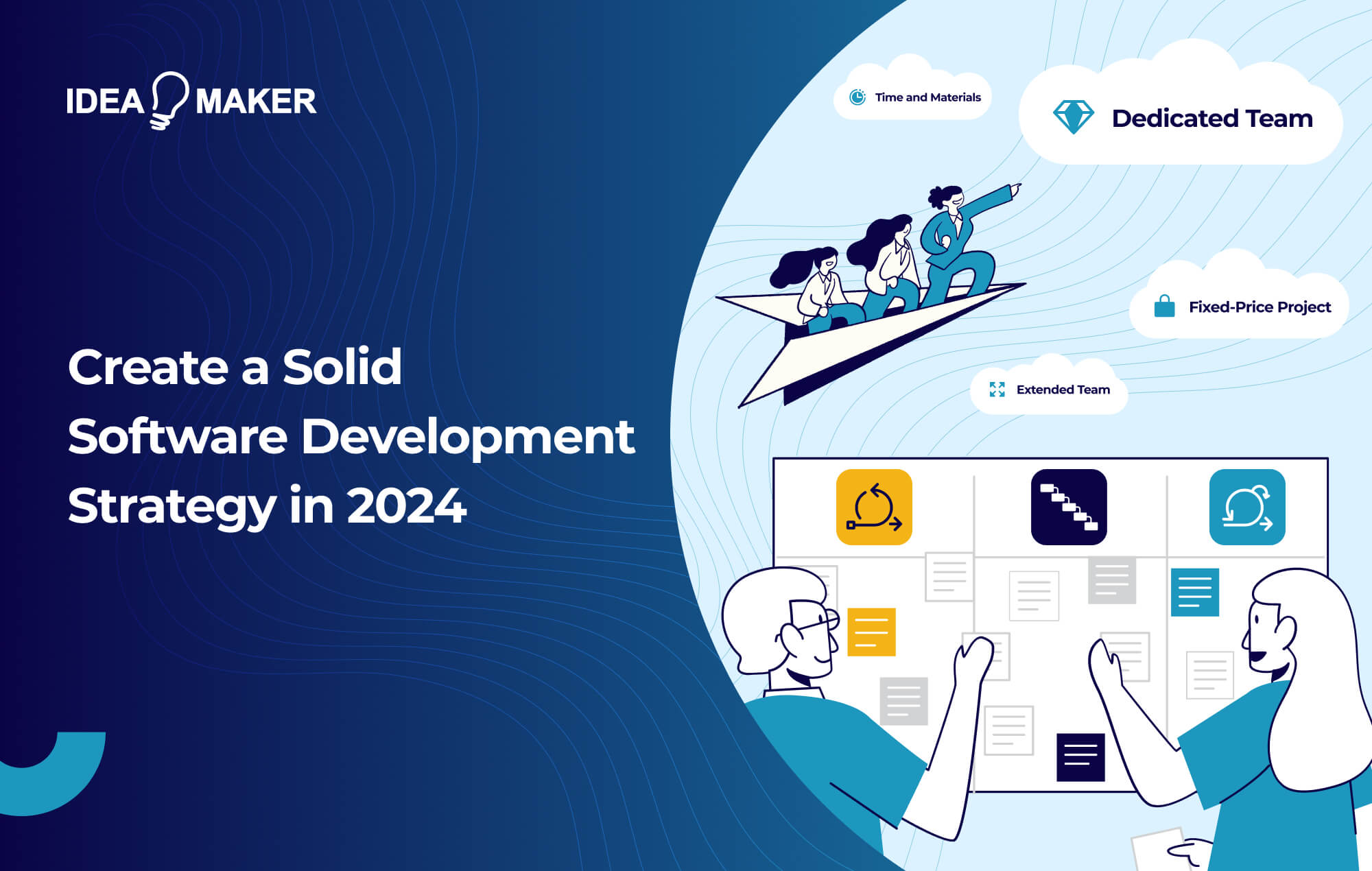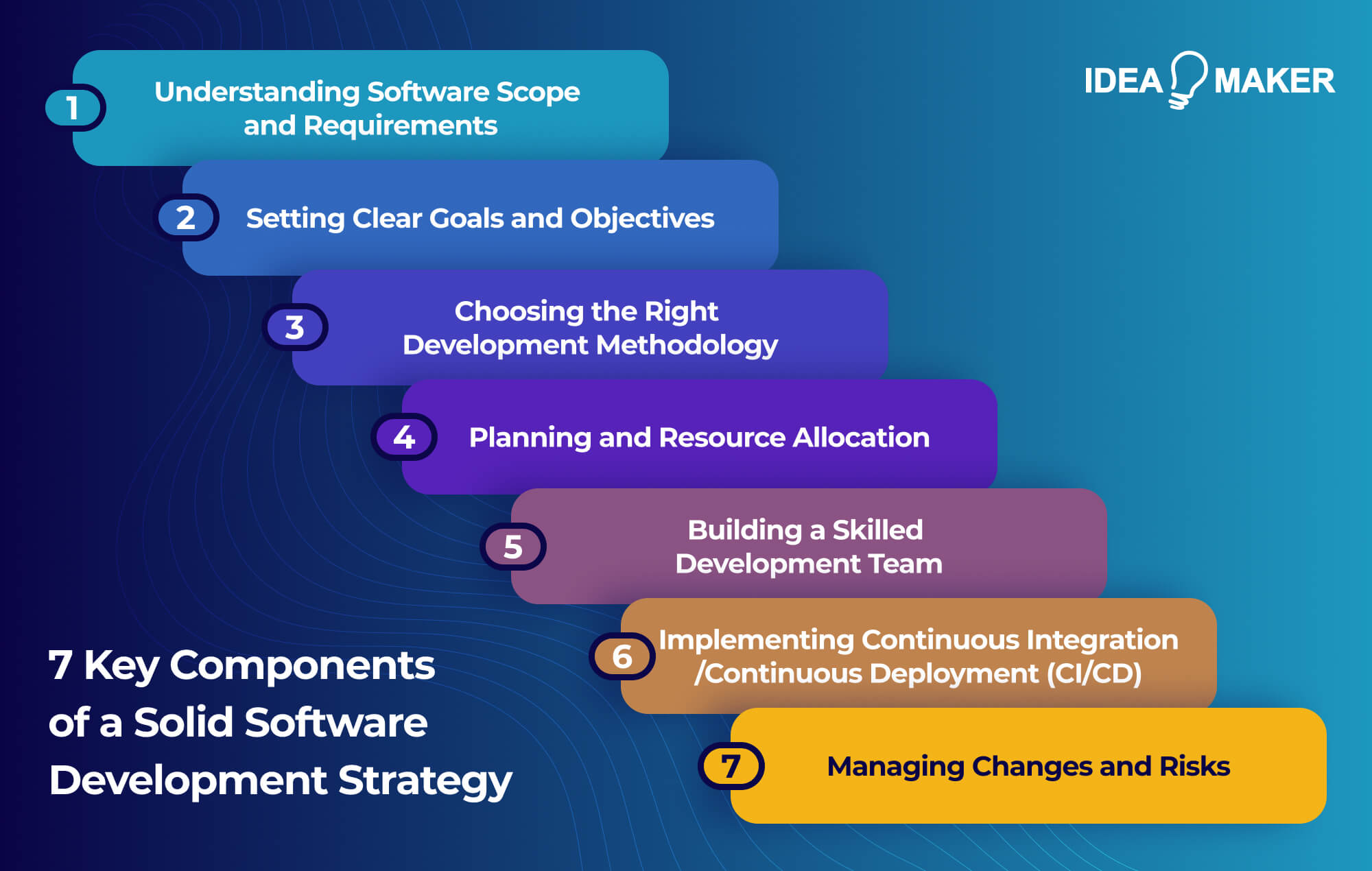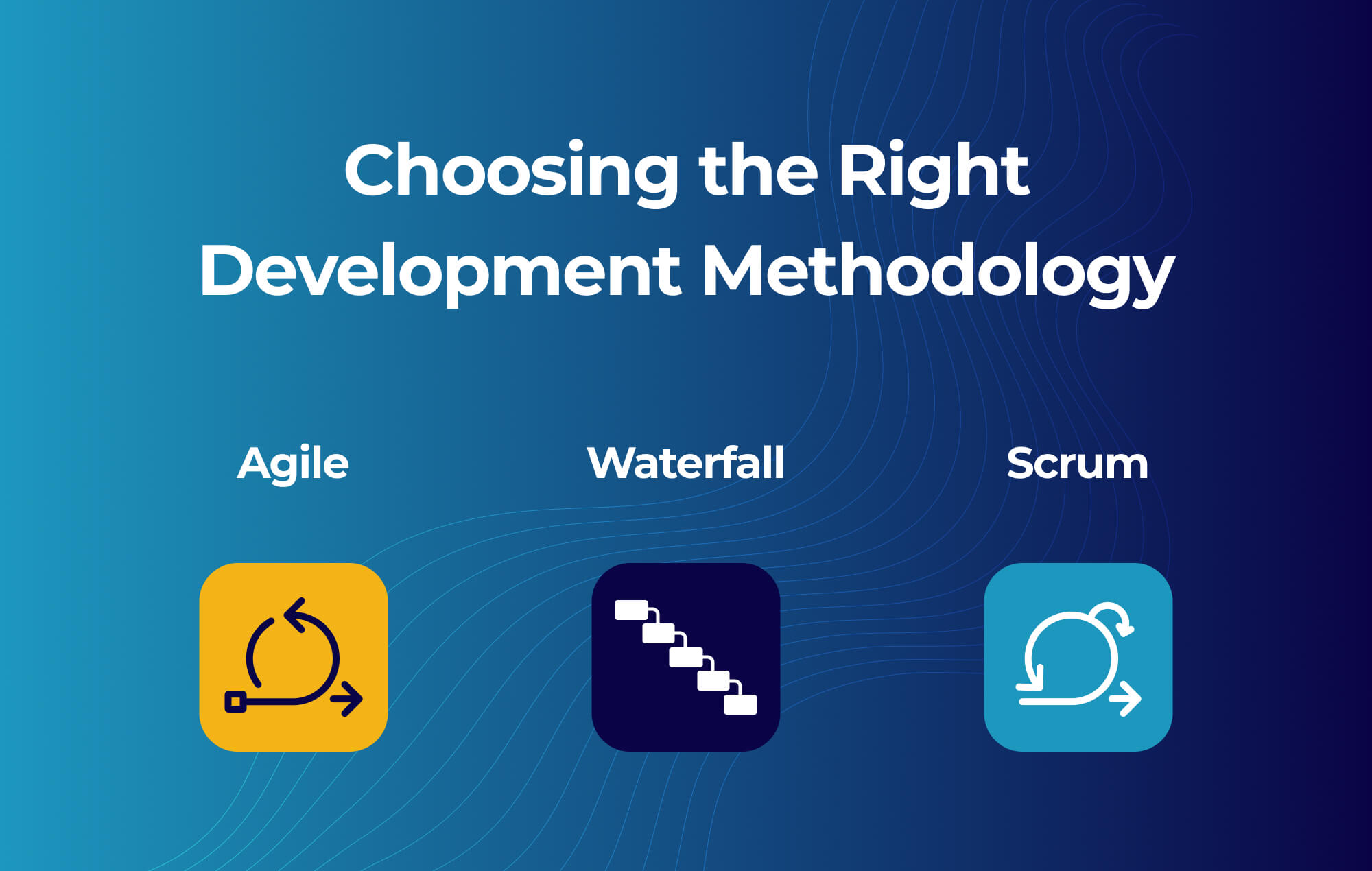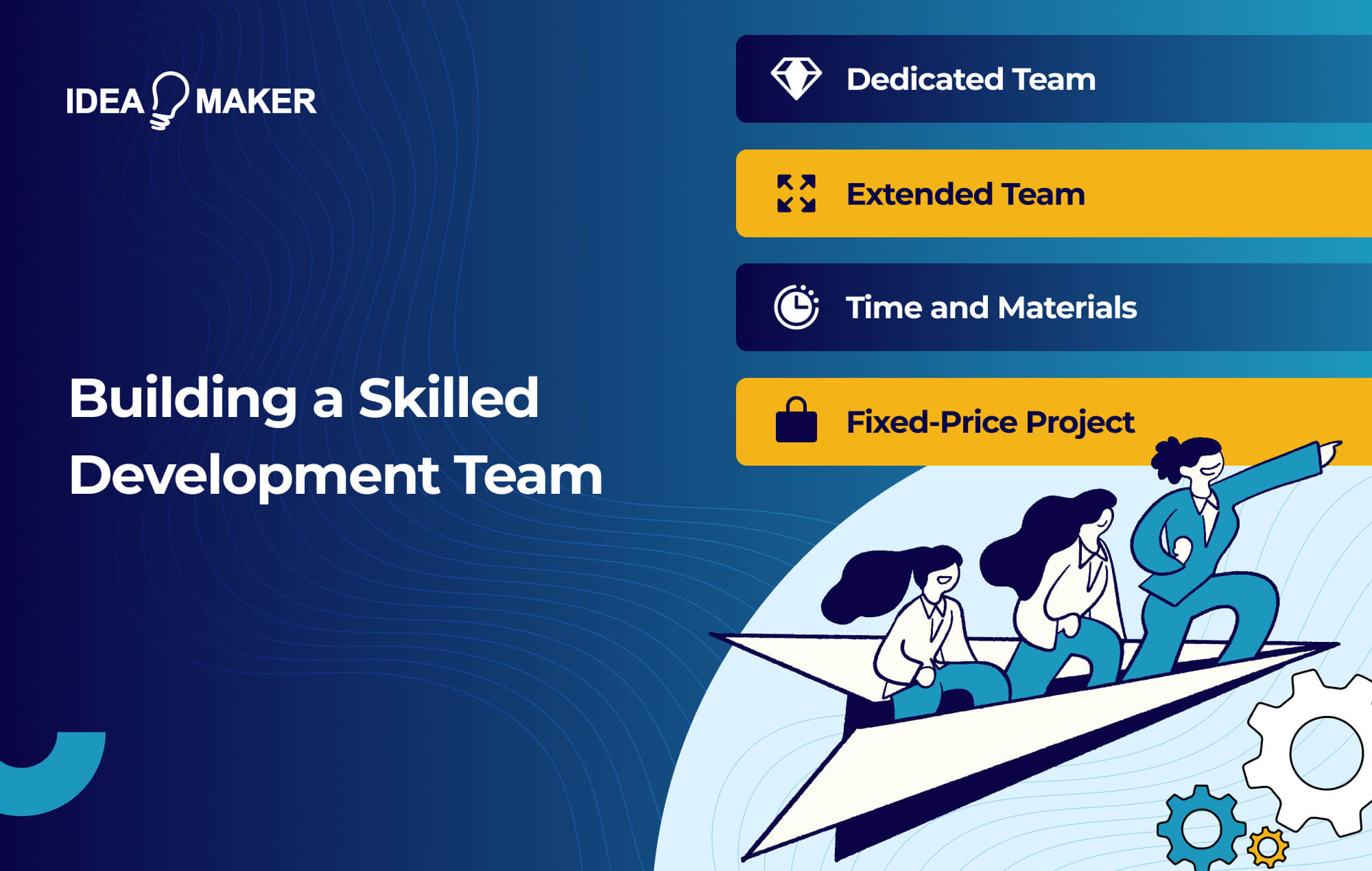Table of Contents
Any quality development project needs an effective software development strategy in place to ensure its success. As much as it’s tempting to gather the required resources and expertise, then dive right into development, this will only lead to future problems.
Building software without creating a solid software development strategy first will lead to a misguided application with inadequate features. It may also increase development costs and time due to unnecessary inefficiencies.
However, these issues can be prevented by understanding how to create a solid software development strategy. In this guide, we explore just that – we outline the key components of the software development process. Keep reading to learn more.
What Is a Software Development Strategy?
A software development strategy refers to your overall software development plan that outlines your processes, defines your project scope, and offers a general overview of your project. Your software development strategy will outline everything from backend technology to user interface design and serves as a guideline for everyone working on your project.
However, unlike your project scope, which outlines all project features, your development strategy takes a macro view of your project.
7 Key Components of a Solid Software Development Strategy
Several components are needed to create an effective software development strategy. Each component serves an essential function in your overall development process, facilitating smooth software development. Below, we’ve outlined the seven key parts of a solid software development strategy for you to consider when beginning your new project.
Understanding Software Scope and Requirements
While it’s tempting to dive straight into your development and determine features as you go, it’s essential to understand your software scope and requirements from the get-go. Otherwise, as the project progresses, you’ll face confusion, leading to misguided decisions, huge inefficiencies, and scope creep as new features are added unnecessarily. 78% of projects experience scope creep, leading to project failure.
The simplest way to avoid scope creep is to ensure that you’ve accurately outlined your project scope and requirements. Doing so is as easy as outlining everything you need your software to accomplish and then determining what functionality can facilitate these needs. For example, if you’re looking to automate your marketing efforts, perhaps you need a social media scheduling feature.
Setting Clear Goals and Objectives
Similar to thoroughly outlining your project scope and requirements, you should also set clear goals and objectives. Doing so will help to guide your project development and inform functionality. For example, if your goal is to increase operational efficiency with your software, then you’ll probably need several automated features. On the other hand, if you’re focused on improving internal communication, your software will need more collaborative features.
When setting goals, it’s best to keep them simple, understandable, and achievable. 80% of businesses fail to track their goals – this is likely because they are unnecessarily complex. Following the SMART goal framework is recommended, ensuring your objectives are Specific, Measurable, Achievable, Relevant, and Time-Bound.
Choosing the Right Development Methodology
There are many ways to approach your development project, as outlined by several popular development methodologies. The development methodology you choose will impact the process and steps your development team follows to deliver your project. However, different methodologies suit different projects. So, which should you choose?
- Agile: In agile software development, teams follow an iterative approach, building features in stages known as sprints. This methodology is prized for its flexibility, along with the many benefits of Agile. Besides increased flexibility, this includes high project control and faster time to market. Agile is well suited to projects that are likely to experience scope changes throughout the development process.
- Waterfall: The Waterfall development methodology offers a sequential approach to software development, where teams work through several phases, such as planning, design, then development. The core advantage of the Waterfall methodology is that it offers a simple way to arrange and follow tasks.
- Scrum: Scrum is an Agile development methodology that focuses on the principle of self-organization. Scrum focuses on learning from experience and analyzing key wins and losses to improve development iterations. This methodology is employed due to its cost-effectiveness and opportunities for increased efficiency.
Selecting the appropriate development methodology is essential to ensure the success of your project. If you want flexibility, you’re better off using Agile or Scrum, but if you have strict development parameters, you may prefer to opt for Waterfall.
Planning and Resource Allocation
The way you allocate your resources will impact the efficacy and speed of your software development. Failing to allocate resources effectively may lead to technical debt. This is where certain areas of your software are neglected to make way for other priorities, such as delivery time. While this may seem expedient at the time, the technical deficit it will cause is likely to lead to additional bugs and expenses later down the line.
To correctly plan and allocate resources, you should first consider your end goal and project priorities. What do you need to achieve your goals and deliver your software effectively? Once you’ve answered this question, you should identify your available resources and allocate them according to task priority.
Building a Skilled Development Team
One of, if not, the most important aspects of creating a solid development strategy is your team. While you can work hard at planning and setting clear goals, your efforts are inconsequential if you fail to hire a skilled and reliable development team. When hiring a development team, you should start by considering the best hiring model.
- Dedicated Team: Hiring a dedicated team means employing a third-party development agency to handle all aspects of the project. This is an excellent choice for business owners who like to take a hands off-approach to development. However, it also enables you to be as involved as you like with the management aspect of your project.
- Extended Team: The extended team model is a good choice for businesses that already have an in-house development team but require additional labor. This hiring model works by simply recruiting the individual developers you need. For instance, if your project calls for a React Native specialist, you can hire an expert to supplement your team.
- Time and Materials: The time and materials model is a highly flexible hiring model where you only pay for the hourly cost of labor and necessary resources. This is a good choice for short-term projects that aren’t likely to require a substantial number of hours to finish.
- Fixed-Price Project: Fixed-price projects are the most popular hiring choice for most businesses and developers. By paying a large one-time fee, you get everything outlined in your project scope regardless of development time. This model is excellent for projects with a clearly defined scope that is unlikely to change.
After determining which hiring model is most appropriate for your business and project, you’ll need to find a development team. You can find software developers on websites such as Clutch.co or Upwork. There are several things to consider when hiring a development team.
- Portfolio: You should review your potential developer’s portfolio to identify project quality and relevancy. For instance, if you’re looking to build an online tech marketplace, you should work with a development team with eCommerce experience. By reviewing existing projects, you can identify how well the developer maintains them.
- Testimonials: Exploring testimonials from past clients is an excellent way to gain an insight into developer quality and customer satisfaction levels. Generally, development agencies will highlight their best reviews on their website. However, you can find them yourself by searching Google for the company name and location or by finding their Clutch.co profile.
- Location: Where is the development team based? Hiring onshore developers tends to lead to high-quality results. This is because the development team understands local conventions and is bound by the same rules and regulations as your business. While offshore developers tend to be more affordable, this is at the cost of quality.
- Post-Release Support Options: When your project is delivered, that shouldn’t be the end of the road. To ensure your software is well-maintained and bug-free throughout its lifecycle, you’ll need to work with a developer that offers post-release support options.
By reviewing the above considerations, you are well-positioned to find the right software development agency for your project.
Implementing Continuous Integration/Continuous Deployment (CI/CD)
Continuous integration and continuous deployment (CI/CD) is a development technique that allows developers to implement code, test, and fix errors early. It works by having developers deposit code into an external repository such as Git. Each repository is then built, tested, and refined. Once the code is functioning correctly, it can be implemented into the rest of the software.
By implementing CI/CD principles throughout your development process, you can reduce testing time, time-to-market, and improve overall project quality. You may also choose to set up staging and production environments to enjoy the benefits of CI/CD further. This is where you have one server hosting a “test” version of your server and another live version where complete updates are implemented.
Managing Changes and Risks
Clearly outlining your goals and understanding your project scope will mitigate many software development risks, such as embarking on a misguided project. However, you may still encounter some unexpected issues and required changes. While you can’t anticipate every possible issue, you can prepare for the possibility by developing a risk management plan.
Your risk management plan should outline any potential risks that you think you may encounter. You should then order these risks by priority and create solutions for them.. This means that if one of your outlined issues does arise, you are ready to tackle it effectively and efficiently.
Collaborate with Idea Maker for Your Software Development Strategy
At Idea Maker, we understand that implementing the above considerations is easier said than done, especially when you’re busy running your business. That’s why we offer full-service development services, from custom enterprise solutions to consumer-facing SaaS applications.
Our development strategy has been refined over nearly a decade allowing us to deliver quality every time. In fact, we have a proven track record with an average of five stars on both Clutch.co and Google. Schedule a free consultation with us today to learn more.
















